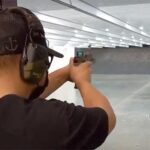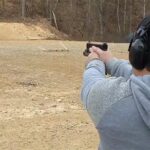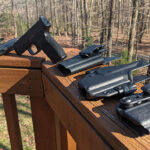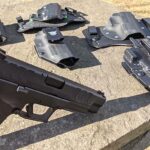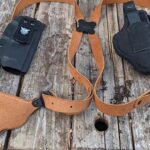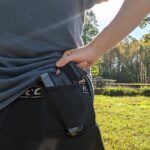Recoil is one of those things that can often be overlooked but actually plays a big role in selecting the right firearm. There are a lot of reasons why someone might need to worry about recoil. For one, people come in a wide variety of shapes and sizes. There are also people with joint, tendon, and nerve issues that may need handguns with less recoil.
The recoil from shooting guns can add to repetitive strain injuries, and a low recoil handgun can make training and firing a whole lot more viable. There are also tactical reasons why someone might be interested in handguns with less recoil.
Table of Contents
Choosing A Caliber To Manage Recoil
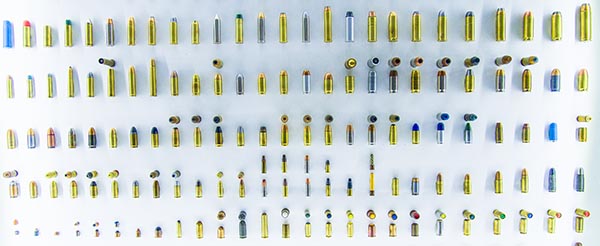
One of the biggest factors with recoil is the caliber of your handgun. There are a ton of calibers used, but there are some that will work best for this. There are too many rounds out there to list, but the best 3 rounds to discuss would be .22 magnum, .38 special, and 9 mm.
Can I Handle The Recoil Of A 9mm?
One of the most common rounds out there is the 9mm. The 9mm round offers a great balance of stopping power and recoil. It is powerful enough that it is used in many self-defense, police, and military handguns. At the same time, it does not have the same amount of power or kick as a .40 S&W or a .45 would have.
Handguns chambered in 9mm tend to have much larger magazine sizes than handguns in other calibers which adds further to their utility as self-defense rounds. You can also go with .380 caliber bullets which have the same diameter as 9mm rounds, but they are shorter and have less recoil. They are fairly similar to 9mm in most other ways.
Handle .22 Magnum Recoil
.22 magnum handguns are for those who desire even less recoil. Common knowledge is that .22 rounds are great for plinking and small game hunting, but not so great when it comes to self-defense. While this is largely true, the .22 mag ups the stopping power a notch without upping the recoil by too much. Also, the benefits to magazine counts are even more pronounced with .22 mag pistols. The magazine capacities can sometimes be double what you would get with a 9mm.
Manage Recoil With .38 Special
If you prefer revolvers, .38 special is probably the way to go because it is definitely powerful enough to stop an aggressor. At the same time, .38 special rounds are not as powerful as other revolver rounds like the .44 magnum. You can find a short barrel or stub nose revolver chambered in .38, you’ll probably be good to go for self-defense.
If you’re someone who likes to occasionally shoot more powerful rounds, you could go with a .357 revolver. .357s can shoot both .357 and .38. You could use .38 for your everyday training needs, and plop in the .357 rounds when you feel like adding a little more “umph” to your shots.
What Kind Of Handgun For Handling Recoil?
Not every handgun will have the same perceived recoil, even though the handguns may utilize the same round. Now that we’ve established some of the best rounds to use, lets go over some great choices in handguns.
1911 Models
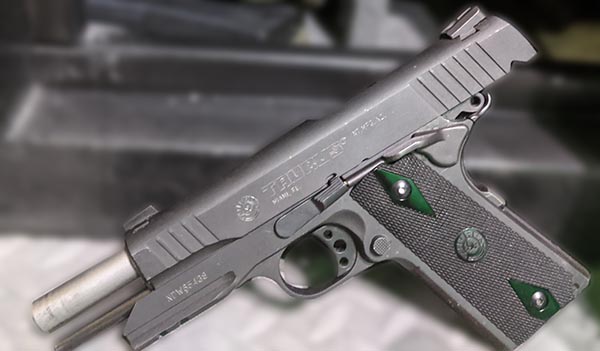
The Colt 1911 was originally chambered in .45, but modern iterations have been chambered in a number of calibers including .380 and 9mm. Some of the best companies for 1911s are Rock Island Armory, Springfield, Browning, and Colt, and you can find more if you search around. The 1911 is a bit heavier than many modern handguns. Many find that this makes it more controllable. It also is simply a well-designed firearm which is why it is still popular over 100 years after its invention.
Glock Handguns
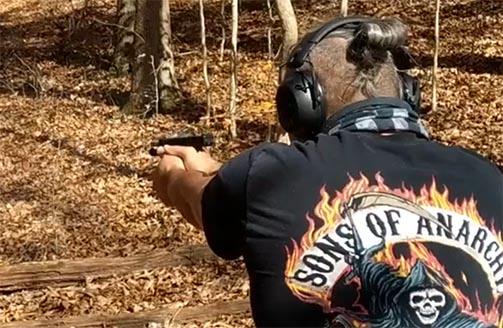
If the 1911 is the quintessential autoloader of yesteryear, the Glock is perhaps the most popular modern handgun. Their handguns are polymer, and use a modern striker-fired firing mechanism. Glock manufactures their handguns for all manner of calibers and sizes. This includes handguns made in .380 and 9mm. They have full-sized handguns as well as compact ones designed for concealed carry.
Ruger LCP/LC9
These handguns are designed for concealed carry. The LCP fires .380 and the LC9 fires 9mm. They are compact, and the grips are ergonomically designed. They are small and use single stack magazines. This means that the magazine size is smaller than you find in some handguns, but the trade-off pays off with their slim build.
Smith & Wesson 351C
This little revolver is chambered in .22 mag. It features an internal hammer. This means that the hammer is enclosed inside the revolver. Some find that this makes the gun safer and easier to conceal due to the hammer not being likely to catch on anything. These double-action revolvers are simple, reliable, and easy to shoot.
There are a lot of great handguns on the market, but these should get you looking in the right direction.
How To Handle Recoil Effectively
Now that you have an idea of what handgun and what caliber of handgun to choose, lets go over some basic tips on controlling recoil when shooting.
Firstly, you want to have your elbows slightly bent. You want them tense, but not locked out. This will allow you to have tension on the handgun with flexibility to absorb the recoil. You also want to have your rear, or dominant hand, somewhat pushing into the handgun with your other hand slightly pulling on it. This ensures that there is enough tension in both directions to properly control the handgun.
Grip techniques have changed over the years, and there is not a consensus on what is best. Establishing a basic, proper grip will go a long way with controlling recoil though. You want to grip the handgun firmly in the webbing, or “V”, of your dominant hand with your grip resting towards the top of the handgun. Some like to point their thumb forward, but others find that that increases recoil. There’s some wiggle room here for you to try out both ways. You then want your other hand wrapped around your dominant hand. Always make sure that however you grip the gun, your thumbs are not resting on the slide itself, as you don’t want to get caught during the slide’s movement.
Jay Chambers
Contributor

